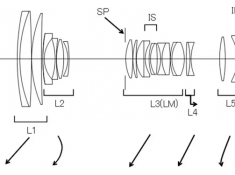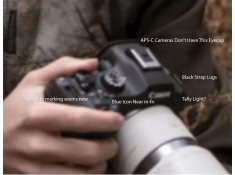Ultimate Guide:How To Clean Your Camera Lens?
Friday 02 August 2024
 3.4k
3.4k
 Reproduction without the author's authorization is prohibited
Reproduction without the author's authorization is prohibited
When you buy a second-hand lens that has not been well preserved or a lens has been left in an inappropriate environment for too long, you will find that the lens has become dirty. Dust, black spots and even mold are all over the lens, and you will definitely want to clean them. But you should be aware that there are many different reasons why the lens becomes dirty, and not all of them will affect the final image.
If you decide to clean the dirt on the lens surface yourself, you can use a lens cleaning kit to clean it after confirming the type of dirt. I know that most people will use shirts and paper towels to clean the lens without a cleaning kit, but using inappropriate materials to clean is likely to damage the lens coating and surface.
Buy the right cleaning kit and use the correct steps to clean your lens.
Remove particles with air blowing.
Use the brush to remove the dust on the surface of the lens.
Use the carbon head to fundamentally remove stubborn dirt.
Spray a small amount of cleaning solution onto the cleaning cloth for better cleaning. ( Note: Don't drip too much cleaning fluid).
Clean the lens with a cleaning cloth and wipe gently, Microfiber cleaning cloth is reusable.
Some common lens dirt and how to clean them
Please note that when any dirt gets Inside the lens group, we do not recommend you to clean it yourself unless you are an experienced camera repairman. In fact, we recommend that you buy Protection & UV Control Filters to protect your lens. Protection & UV Control Filters can block most dirt from entering the interior of your lens, and high-quality Protection & UV Control Filters will not harm the image quality.
Dust:
Small particles that settle on the lens surface.

Surface: Dust can easily accumulate on the surface of a lens, particularly if it’s left uncovered. A simple blower can be highly effective in removing loose dust particles without the need to touch the lens. A soft brush can also be used, especially for more stubborn dust, ensuring the brush is clean to avoid adding more particles.
Inside the Lens Group: Dust inside the lens group is more problematic as it can affect image quality by scattering light. Internal dust requires professional cleaning as disassembling a lens without proper tools and expertise can lead to more damage.
Fingerprint smudges:
Oils and sweat from your fingers.

Surface: Fingerprints and grease are common on lens surfaces, often from handling. Using a microfiber cloth with a few drops of lens cleaning solution, you can gently wipe the lens in a circular motion. The microfiber cloth’s fine fibers effectively lift oils and grease without scratching the lens.
Inside the Lens Group: Grease or smudges inside the lens can occur if internal elements are touched during assembly or repair. This kind of contamination needs professional service to disassemble and clean the affected elements properly, ensuring no residue is left behind.
Water spots:
Droplets or splashes of water that leave residue.

Surface: Water spots can form if droplets dry on the lens surface, leaving mineral residues. To remove these, apply lens cleaning solution to a microfiber cloth and gently clean the lens. This helps dissolve and lift the dried spots without damaging the coating.
Inside the Lens Group: Water spots inside the lens indicate moisture has entered, possibly due to a compromised seal. This not only affects image quality but can also lead to fungus growth. Professional cleaning is required to open the lens and remove the spots, and potentially re-seal the lens to prevent future issues.
Sand and grit:
Tiny abrasive particles, particularly if you're shooting in sandy environments.

Surface: Sand and grit are particularly abrasive and can scratch the lens if not removed carefully. Using a blower to remove larger particles followed by a soft brush helps clear the surface without rubbing the abrasive particles against the glass.
Inside the Lens Group: Sand inside the lens is a serious issue as it can scratch internal elements and affect the lens mechanism. This requires professional disassembly and meticulous cleaning to ensure all grit is removed and no damage is done to the delicate internal components.
Grease:
From food, skin, or other greasy sources.

Surface: Surface grease, often from skin oils or environmental sources, can be cleaned with pre-moistened lens cleaning wipes. These wipes are designed to break down and lift grease without leaving streaks or residue.
Inside the Lens Group: Grease inside the lens, such as from lubricants used in the lens mechanism, can spread to optical elements if seals fail. This requires a professional technician to clean and re-lubricate the lens properly, ensuring no excess grease contaminates the optical surfaces.
Mold or fungus:
Can grow inside lenses if stored in humid conditions.

Surface: Surface mold or fungus can appear if the lens is stored in humid conditions. Using a lens cleaning solution with antifungal properties can help clean the surface. However, if the growth is extensive, professional cleaning might be necessary to ensure thorough removal.
Inside the Lens Group: Mold or fungus inside the lens is a serious issue as it can etch into the lens coatings and glass. This requires professional disassembly, thorough cleaning, and potentially re-coating of the affected elements. It’s also essential to address the storage conditions to prevent recurrence.
Statement: all contents and remarks made by K&F CONCEPT 's intranet friends only represent themselves and do not reflect any K&F CONCEPT 's opinions and views.
-
 Leica M-mount Milestone! Leica M EV1 Camera SpecificationsWednesday 15 October 2025
Leica M-mount Milestone! Leica M EV1 Camera SpecificationsWednesday 15 October 2025 -
 Panasonic to release the LX100M3 camera on October 17thTuesday 14 October 2025
Panasonic to release the LX100M3 camera on October 17thTuesday 14 October 2025 -
 Zeiss is about to release a new Otus ML series lensMonday 13 October 2025
Zeiss is about to release a new Otus ML series lensMonday 13 October 2025 -
 Canon Publishes Patents for 28-400mm F3.5-6.31S and 28-400mm F4-81S LensesMonday 13 October 2025
Canon Publishes Patents for 28-400mm F3.5-6.31S and 28-400mm F4-81S LensesMonday 13 October 2025 -
 First spy photos of the Canon EOS R6 Mark III have been releasedFriday 10 October 2025
First spy photos of the Canon EOS R6 Mark III have been releasedFriday 10 October 2025


@2x-235x175.png)



